
Humans and Malmo in Minecraft
Microsoft
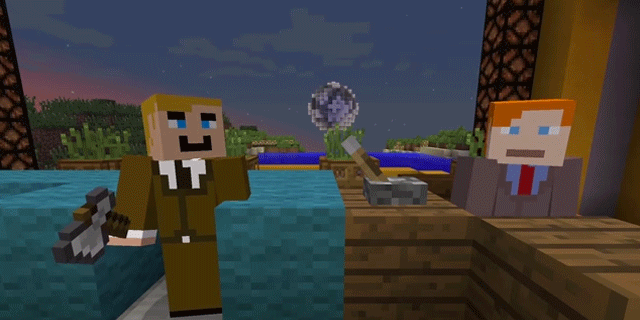
Microsoft is using an experimental version of its game Minecraft to test the limits of artificial intelligence.
Called Project Malmo (named after a Swedish city, as Minecraft originates out of Sweden), the new version of the game allows reinforcement-learning algorithms to control a character. Reinforcement algorithms, which are inspired by psychology, focus on putting artificial intelligences within a specific environment and letting them figure out how to gain further rewards. By making those rewards incremental, Microsoft researchers believe they can train the AI to learn goals.
Minecraft’s sandbox nature could turn it into the perfect training ground for AI. Within the game, AI can learn how to get out of mazes or holes on its own, and how to collaborate. “Minecraft is very close to the real world in many ways,” said Jose Hernandez-Orallo, a professor at the Technical University of Valencia, Spain, who has been part of a private preview of Malmo that Microsoft has offered to scientists. “There are so many possibilities.”
Research like Malmo requires repeated testing and trial-and-error, which is why working in a virtual environment like Minecraft is better than the real world. Malmo’s character often fall in lakes at this point, but it’s cheaper to have virtual characters fall into virtual lakes than to build robots that would do the same thing.
A human player can also enter the experimental mode, and they can work together and chat through a window. While the researchers for the project see wider implications than Minecraft, Malmo could also affect the way the game is played. “In the long run I want to work toward AI that can be taught by any user to help them achieve their goals,” Katja Hoffman, a researcher at Microsoft Cambridge in the U.K. who leads the project, told theMIT Technology Review.
Towards that end, Microsoft has made Malmo open source. They’ve released the code on GitHub and are encouraging even novice coders to try their hands at helping an AI Minecraft player build a house or craft a sword. “If I come across some YouTube video showing off some exciting new functionality enabled by our mod,” says Matthew Johnson, the development lead on Malmo, “that would make my day.”
Microsoft’s AI Is Playing Minecraft to Learn How the World Works
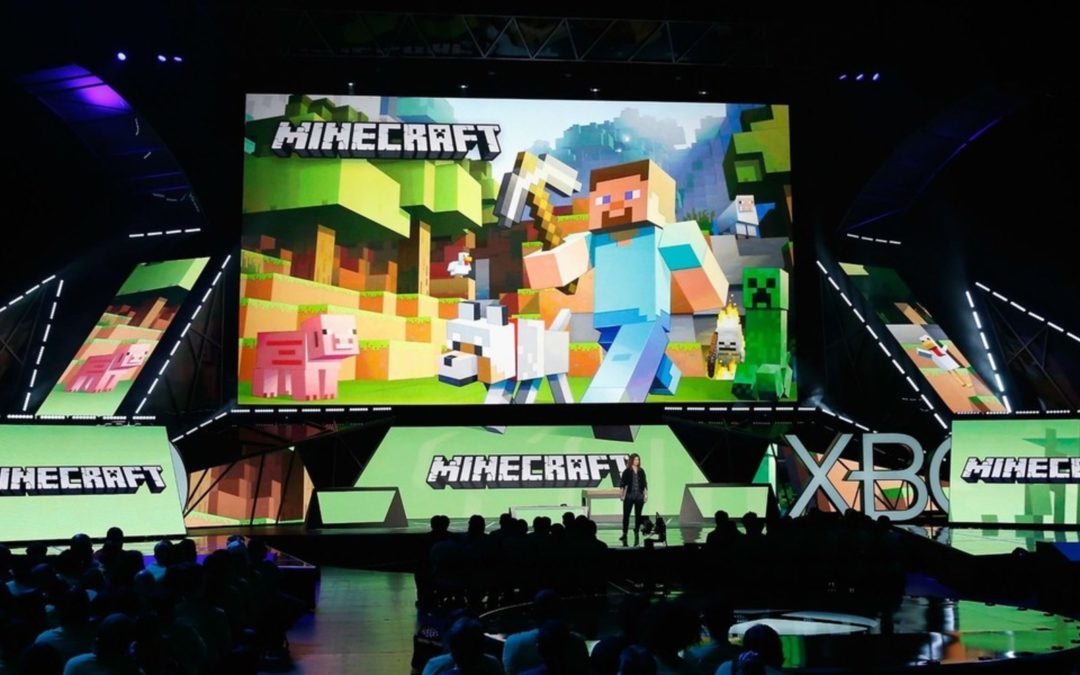
The Malta Baby & Kids Directory will be celebrating its 10th anniversary by partnering with Headstart Technology to hold a children’s competition themed ‘Malta in Minecraft’ – encouraging children to create their favourite Maltese scene in the style of this very popular e-learning tool.
“We are very excited to explore creativity in all its forms, and this special anniversary edition is really taking our competitions in a completely new direction,” said Crysta Darmanin for Malta Baby & Kids Directory.
“When we launched EasyPeasy Coding earlier this year our aim was to showcase how technology can be a catalyst for creativity in young children. We believe that programmes like Minecraft are ideal ways to engage kids and can be so much more than just games,” said Klaus Conrad from Headstart Technology Limited.
Minecraft has become a global phenomenon, played by millions of children and adults alike. Recently acquired by Microsoft, Minecraft is best understood as an unlimited box of virtual building blocks, where players have complete freedom to create anything they want, from massive buildings to sophisticated machines.
The competition is open to children aged five to 12 and submissions may be physical models, colour print-outs of screenshots or exports. Many prizes are up for grabs, ranging from Raspberry Pi computers to Ozobots, free Minecraft accounts and course vouchers for EasyPeasy Coding workshops. Thought 3D will be printing reproductions of the top submissions.
Full rules and regulations may be viewed at www.maltababyandkids.com. One can also subscribe to form part of the Malta Baby & Kids community to updated with the latest developments on this incentive.
Baby, kids directory to hold 10-year anniversary Minecraft competition
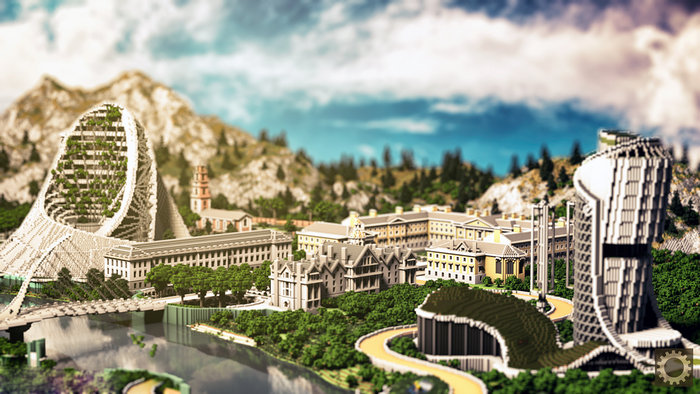
It’s enthralled an entire generation and sold more than 100 million copies, so perhaps it should come as no surprise that for some hyper-skilled players, the open-ended, Lego-like building game Minecraft has become an actual, money-earning occupation. Just as the most-talented Lego architects earn a living showing off their blocky creations, there’s good money to be made by anyone with the skills to craft Minecraft‘s cube-shaped digital blocks into beautiful sculptures and stunning worlds.
This March, Warner Bros used a slice of its $165 million Batman v Superman: Dawn of Justice marketing budget to hire several YouTube stars and a company called BlockWorksto create Minecraft renditions of both Gotham City and Metropolis – with the former including a Batmobile that players could drive around the virtual city. This was business as usual for BlockWorks, which is headed by Cambridge University architecture student James Delaney. The professional mapmakers previously built a Minecraft map of Tomorrowland for the Disney film of the same name, which likewise was played by popular YouTubers to the delight of hundreds of thousands of fans. They’ve also built worlds for Microsoft, The Guardian and the Royal Institute of British Architects, among many others.
It’s been a meteoric rise for Delaney and his three co-founders. “I started playing Minecraft about four or five years ago,” says Delaney, who isn’t scheduled to graduate from Cambridge until 2019. “I was just a regular school kid. I was interested in architecture, and it sort of grew from there.”
The four friends played just for fun. Then they noticed that Minecraft-focused YouTubers and the larger, more popular multiplayer servers were starting “to get a decent amount of payment” from donations – by 2013, many servers were pulling in tens of thousands of dollars every month.
Back then, these Minecraft-centric industries were just getting started, and in order to grow they needed a constant stream of new and interesting worlds to play with. Delaney sensed the opportunity. “We thought if we provide these guys with really good builds, there could be a business here,” he explains.
That was three years ago. Now that team of four has become 42, and BlockWorks is a legit business – albeit one for which the “office” is split between Skype and a private Minecraft server. Delaney is managing director, which sounds like it would be hard to juggle with his studies. But he has a handle on it. “The good thing about university is that you spend half the year on holiday,” he says.
BlockWorks’ business is anchored by Minecraft‘s corporate owners, Microsoft, which reached out to Delaney and his team in June last year after nine of them published a 31,752,348-block map that depicted a futuristic civilization deep beneath the surface of the ocean. The tech giant has since commissioned BlockWorks on several projects, including the elaborate map that starred at this year’s Microsoft’s E3 briefing and a set of replicas of the seven wonders of the ancient world – the latter so that school kids could visit them in Minecraft: Education Edition.
When not building Minecraft maps for Microsoft or big-name brands and YouTube stars, the team at BlockWorks busy themselves with projects such as Ireland 2066 and Climate Hope City. These were both conceptual builds with an educational bent – Ireland 2066 was made to inspire school-aged children in conceiving their entries for a competition celebrating the past and future of Ireland, while Climate Hope City was a collaborative effort with fellow Minecraft professional creative Adam Clarke and The Guardian to envisage a fully-sustainable city using only existing green technologies. This sustainable city build ranks among Delaney’s favorites. “They didn’t give us a plan,” he says. “Just design and build a sustainable city, which is kind of an architectural student’s dream.”
BlockWorks is the most prominent Minecraft “build team,” as they call themselves, but there are dozens of others. Most are led by teenagers or 20-somethings like Delaney – though at least one well-known professional mapmaker, Adam “Wizard Keen” Clarke, is over 40 – and the rewards run the gamut from pocket change to checks big enough to keep full-scale creative agencies in business. Delaney only knows of three or four build teams that operate at the upper end of the scale, however.
“You’ve got kids who might be really great at Minecraft,” he says. “They’ve been doing it for four years, but they’re still just doing it for fun. Maybe occasionally they make a few hundred dollars from a server that wants to have a really nice looking spawn [starting area for players] from them. Then on the other side of the spectrum you’ve got people who are taking it incredibly seriously and they’re working with some of the largest companies in the world – huge advertising budgets.”
“And so the scale of work in what is a relatively niche industry is absolutely enormous. I don’t know if I can give any figures,” he continues. “But enough to make a profitable business.”
Take GoCreative, for example, which was founded by a German teenager and Brandon Relph, an enterprising 15 year-old from the UK. Relph made £10,000 last year building scene recreations from a film and scale replicas of famous landmarks – all the while maintaining good grades at school and setting aside only a few hours a night for hisMinecraft-centric business. GoCreative is now a small multinational company with around two dozen employees and commissions coming from the education and non-profit sectors as well as entertainment and tourism. In March, a charity that aims to combat declining honey bee populations hired them to help visualize the science in Minecraft. They created a model that depicts gun-toting ants assaulting a giant, peaceful beehive.
Another successful group, Everbloom Studios, has an origin story similar to BlockWorks’. Co-founder Matthew Banks parlayed his love of Lego and model making into a Minecraft addiction early in the game’s life. He got good just as Minecraft was entering the stratosphere, and he and a few friends he’d met online started getting offered money to build maps for multiplayer servers. Their first paid project, published in February 2013, was a small Nordic-style seaside town where players could rest and recuperate before heading back out to battle against the wilderness. (It was also where their character would “spawn” on arrival to the server or respawn upon death.)
Fast forward to today and they have 40 members, 25 of which handle building (10 work on videos and the rest fill “niche roles”). Everbloom still gets “over 90 percent” of its work from servers. They build player hubs, starting areas, and maps for special mini-games. Popular mini-games include a Minecraft spin on laser tag or The Hunger Games, castle battles, boat races, Minecraft renditions of popular sports, and much more.
The most profitable commissions come from brands, though. Or rather, they did – until a recent Minecraft policy shift that shook the world of pro builders.
A change to Minecraft‘s Commercial Usage Guidelines announced at the end of May prohibits companies from commissioning Minecraftmaps or modifications that are meant for promotional purposes – so no more Minecraft adaptations of a big set-piece from the latest blockbuster movie and no in-game Verizon smartphones. In essence, anything that exists solely to promote a brand is off-limits.
“We want to empower our community to make money from their creativity, but we’re not happy when the selling of an unrelated product becomes the purpose of a Minecraft mod or server,” wrote Owen Jones, Mojang’s director of creative communications, in a blog post explaining the new rules. Glixel reached out to Microsoft for more detail on these new policies but did not receive comment.
Build teams at the lower end of the market won’t be affected much – they weren’t getting these lucrative promotional commissions anyway. But for those at the top it means uncertain times ahead.
Banks says they’ve had to scramble to find companies and organizations that can pay for builds that won’t be construed as marketing.
Their best bet going forward may be education, which is where Delaney says BlockWorks now gets the bulk of its commissions.Minecraft and Minecraft: Education Edition are used in thousands of schools around the world, and one flavor or the other is now a standard part of the curriculum in many schools across Scandinavia, the U.S., Australia, and elsewhere. These schools often need help designing and building the maps for Minecraft-centric lesson plans to help teach kids about everything from biodiversity and deforestation to sustainable living and city planning.
Some things are clear-cut no-go zones. Disney definitely can’t pay a build team $10,000 to make a map of the climactic scene from the next Avengers movie. But there are grey areas. Can museums fund the creation of maps based on exhibitions they’re running? Or could that be construed as promotional? One such project, Tate Modern’s Tate Worlds, which features Minecraft re-imaginings of famous paintings, has already been taken down from popular server Hypixel because of the new rules, according to the map’s builder.
The bottom line, as far as Banks is concerned, is that no matter how the blurred edges turn out under the microscope, this sets a worrying precedent for the future of professional Minecraft map making – and shows the precariousness of economic ecosystems built around corporate-owned games. And it could chase away – or force out – some of the best builders.
Banks says that if the build scene contracts, the servers will suffer – and so, in turn, will the game as a whole. “Minecraft is only limited by the creativity of the people who play it,” he argues. “The only danger it faces is if the ability for its player base to be creative is taken away.”
Meet ‘Minecraft’ Builders Who Craft Impossibly Detailed Virtual Worlds
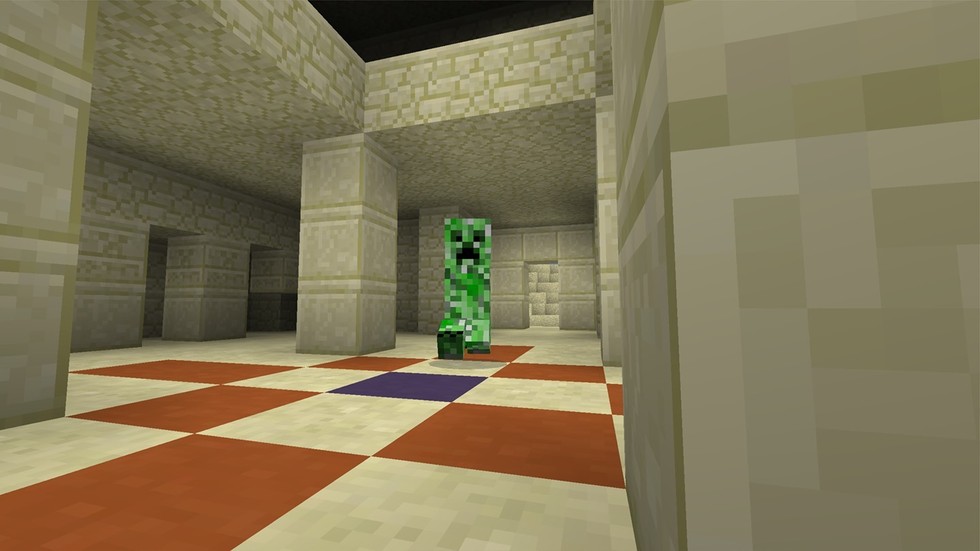
Redditor Requag has created a nearly fully functional replica of Pokémon FireRed on a virtual Game Boy Advance in Minecraft, making it one of the most elaborate and interactive creations every built in the game.
The replica isn’t 100 percent complete yet. The game is still missing basic functions of the game, including combat and dialogue, but on their YouTube page, Requag said they’re still working on it and they have plans to incorporate those abilities later on. The goal, they said, is to make it a fully functional version of the game that people in Minecraft can play, but they wanted to get out a version of it as quickly as possible. The video, which can be seen above, demonstrates how structure blocks within Minecraft can be used to create something as intricate and elaborate as this. Requag used structure blocks, which are designed for map makers, to keep the design of Pokémon FireRed identical to the original game.
Requag added that if people wanted to try out the basic version of the Pokémon recreation, there’s absolutely no modding required. All it takes to run is version 1.10 of Minecraft. While the recreation is extremely impressive, it doesn’t exactly feel like a Pokémon game. Minecraft can’t keep up with the input controls needed to make the recreation run smoothly, but it’s still an interesting look at what can be built inside the game.
For those interested in exploring Pokémon within Minecraft, more information can be found here.
Player recreates working Pokémon on virtual Game Boy Advance in Minecraft
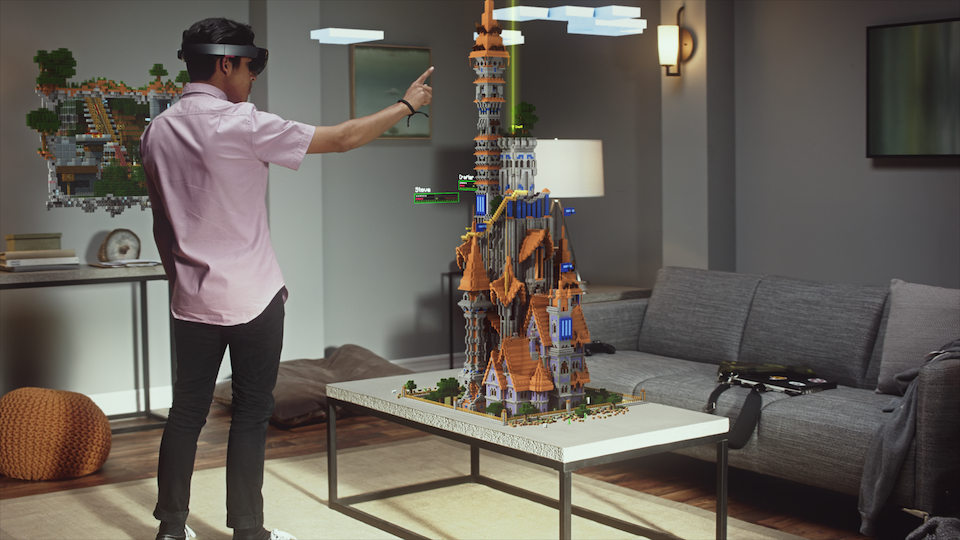
Something crazy has happened in the past few days: Kids are playing outside again. And they’re not just playing outside—they’re playing video games outside.
That’s all thanks to Pokémon GO, which lets Pokémon trainers capture and battle Pokémon via an augmented-reality (AR) app on their mobile devices in the real world.
But I don’t really need to summarize it do I? At this point, everybody and their mother knows what Pokémon GO is.
Now imagine that this trend can continue, that parents can keep sending their kids outside to play together, with other games. No doubt every game publisher and developer out there is trying to figure out how to capitalize on this trend.

Minecraft on HoloLens. (Credit: Microsoft)
But only one has an IP that’s truly likely to succeed the same way Pokémon has, and that’s Microsoft, the owners of the wildly popular Minecraft franchise.
Not only is Microsoft the rights-holder to one of the most popular kids’ games on the market, they’ve even worked on an augmented reality version of the game for their still-in-development AR HoloLens goggles.
Well, it’s time for Microsoft to set down the HoloLens for the time-being, and get Minecraft AR out on smartphones. They should do this soon, too, while the buzz surrounding Pokémon GO is still relatively fresh.
Now I’m not certain exactly how Microsoft has developed their own version of HoloLens Minecraft, but they should seriously consider aping some of Pokémon GO’s best qualities.
Imagine going out into the real world and finding materials to use for crafting and building where they would be in real life. A park or woods to find dirt and rock; a lake or beach to add water, and so forth. Add to this augmented reality zombies for a sense of danger.
Then, imagine you could just walk down the street to find other peoples’ creations, or team up with friends to build truly impressive AR structures and worlds—in the real world.
I’m not sure if this would necessarily be as popular as Pokémon GO, but it’s literally the only other IP I can think of that could even come close.
There will be many Pokémon GO imitators, and most of them will be a total disaster. Some may be relatively successful, but without the Pokémon brand behind them, they simply won’t have that special something to be a truly massive hit the way this game has been.
Minecraft might, however. But Microsoft can’t limit it to Windows Phone or HoloLens. This needs to be on iOS and Android if it wants to succeed. The time is ripe for augmented reality—something many people had written off as virtual reality took the spotlight. Minecraft AR could be both really cool and a huge hit.
Why Microsoft Needs To Copy ‘Pokémon GO’ And Release ‘Minecraft AR’ On Mobile ASAP

Minecraft For Gear VR Is Wonderfully Immersive